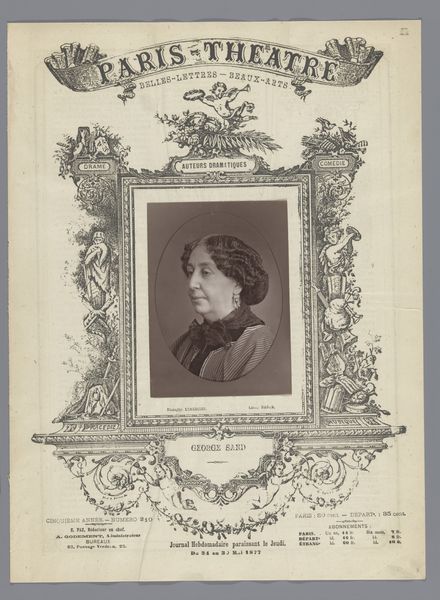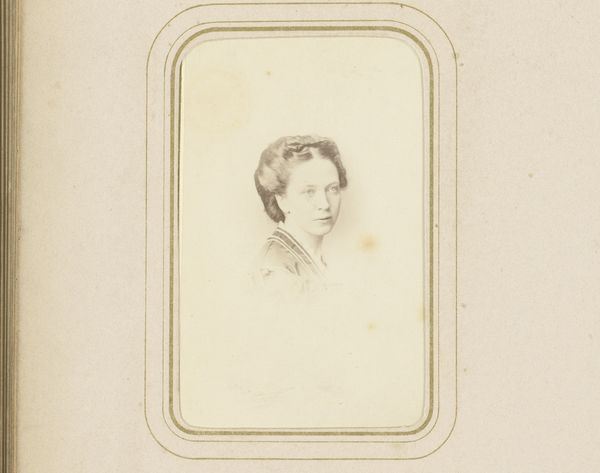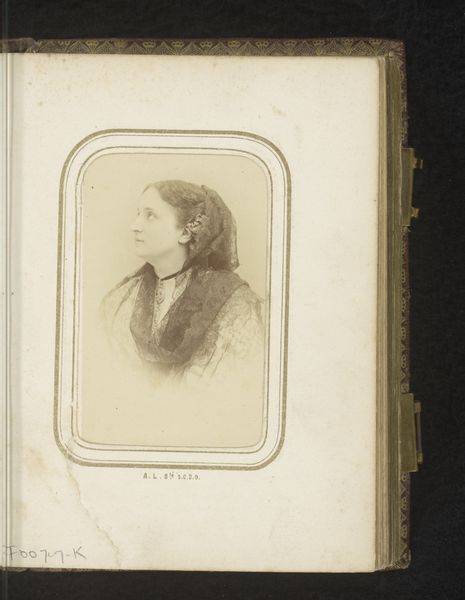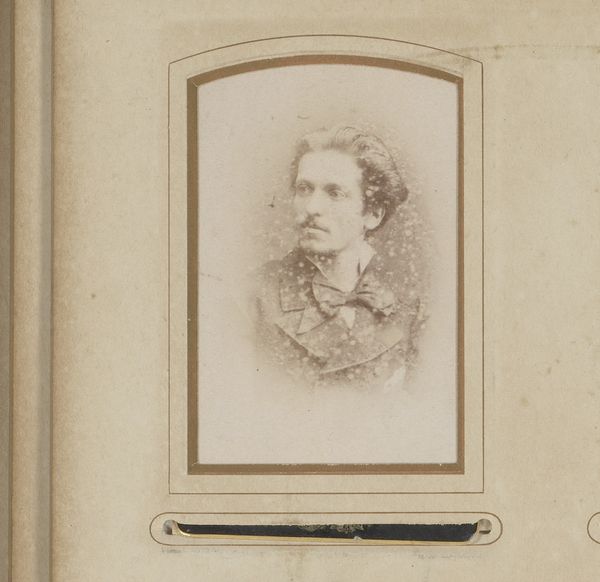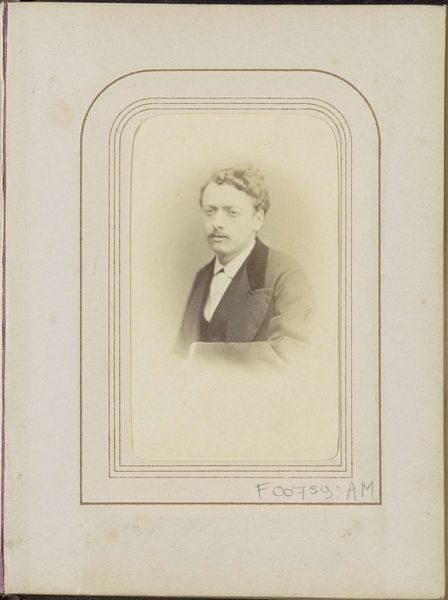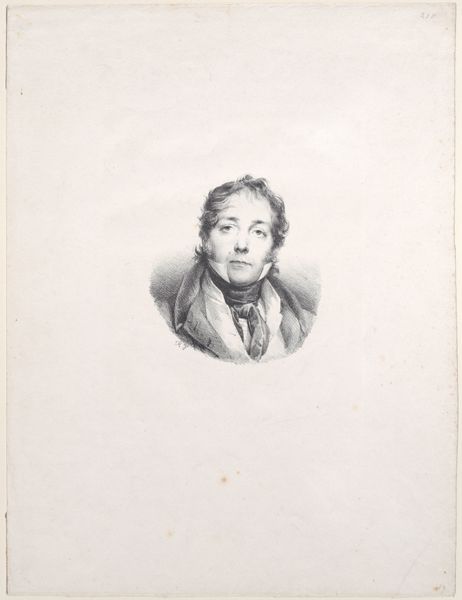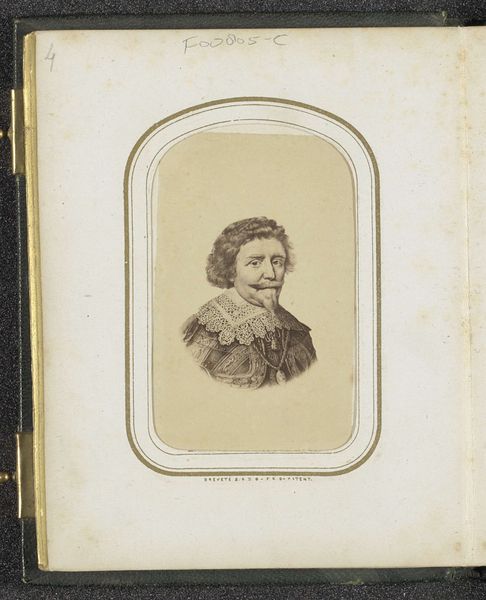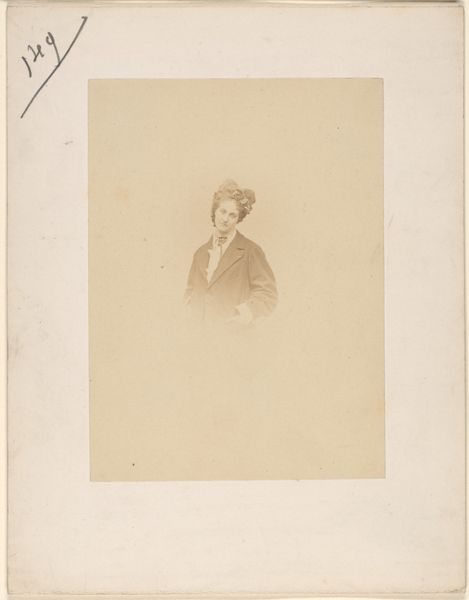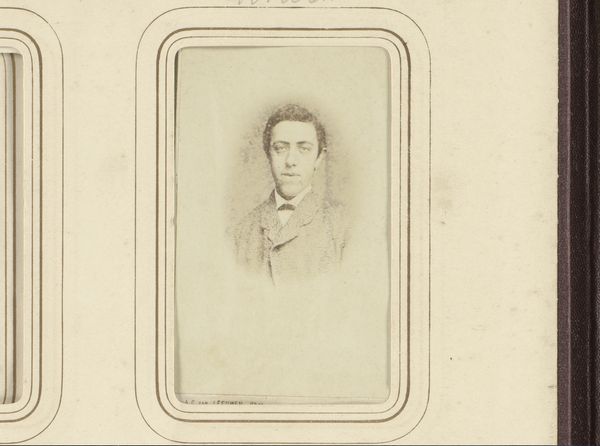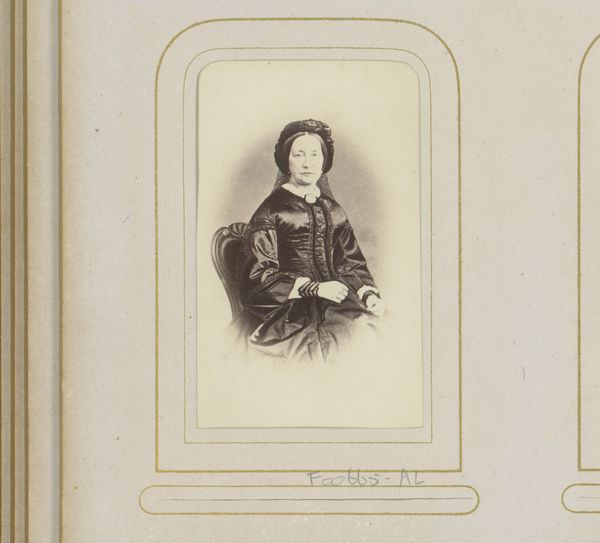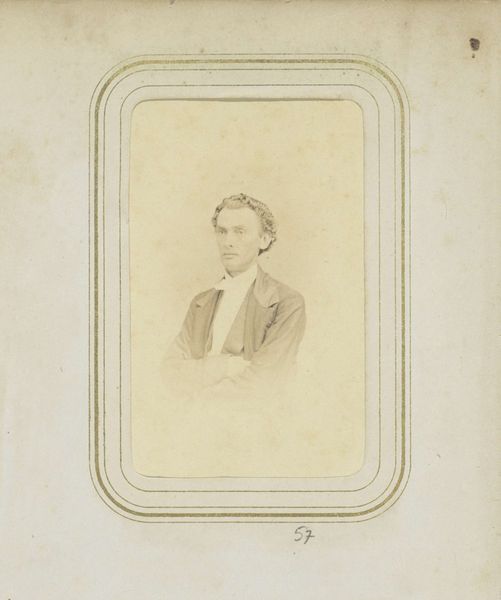
photography, albumen-print
#
portrait
#
photography
#
coloured pencil
#
albumen-print
#
realism
Dimensions: height 85 mm, width 51 mm
Copyright: Rijks Museum: Open Domain
Curator: Here we have an albumen print, dating from around 1860 to 1865, entitled "Portret van de schilder Maurits Leon" – a portrait of the painter Maurits Leon. The photographer is Maurits Verveer. Editor: There's a softness to this portrait, almost ethereal. The edges of his form seem to fade into the background. He's looking off to the side, a sort of contemplative, artistic gaze. It's as if the artist doesn't wish to look back directly at us. Curator: Indeed. These early photographic portraits, made on albumen prints, were often quite soft due to the nature of the process and the lengthy exposure times. There was also often retouching. Given the title, it also underscores the emerging role and status of the artist in mid-19th-century society. We see this celebrated in similar paintings from that period as well. Editor: And the photographic portrait itself starts becoming a tool to signal and reinforce social positions. Was Verveer photographing Leon as a gesture of solidarity among artists? Was this meant for public display? It certainly feeds into that romanticized vision of the pensive artist. Curator: Most likely intended for private circulation, within artistic circles, but these images did find their way into public collections eventually, reshaping perceptions of artistic identity over time. This is a fascinating convergence, since photography democratized portraiture while also codifying existing social hierarchies. Photography also provided an “objective” document that nonetheless relies upon the social roles and cultural expectations that impact both the subject and artist at play in their act of representation. Editor: And isn't it striking how this photograph, in its supposed objectivity, already presents such a constructed image of artistic genius? We see that now through this distance that art history and theory create; yet, what did it present to the person purchasing or circulating these kinds of pieces then? I appreciate these subtle reminders to continue dismantling the canon. Curator: Exactly. It allows us to revisit narratives, question what was intentionally amplified, and whose stories were inadvertently suppressed in constructing our understanding of art history. It invites constant re-evaluation. Editor: A beautiful visual reminder of art's power to simultaneously reveal and conceal. Curator: Indeed, and the need to maintain a critical, probing eye on all it presents.
Comments
No comments
Be the first to comment and join the conversation on the ultimate creative platform.
